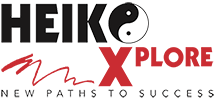No problem can be solved by putting it on ice
 A drowning man doesn’t ask the cost of a rope
A drowning man doesn’t ask the cost of a rope
Ursula Kroeber Le Guin
This week’s post title is a statement of Sir Winston Churchill.
And as the English statesman remarked, many organizations cannot resolve problems and therefore freeze them.
Unable to face them, it is better, they think, to put them on ice.
Or ignore them.
These thoughts originated in discussions which took place during some brilliant training recently conducted. We were speaking about how leaders, first and foremost, should take part in these events, as opposed to just their collaborators.
In fact, how can “leaders” guide their teams if they haven’t got the skills?
And what’s more, more generally speaking, how can top managers, managing directors and business owners keep their skills current?
Imagine the silence if everybody said only what they know? (Karel Capek)
Some of them probably think they don’t need to; they know everything and have seen everything. A curious conviction in a world moving at Internet speed and producing an incredible quantity of fresh knowledge every day.
Others are convinced that knowledge and abilities gained twenty of thirty years back at some university are a guarantee of their usefulness for today and for tomorrow. Rest in peace continuous learning!
The results of this mentality are clear for all to see: widespread demotivation, disengagement, a refusal to take responsibility and an inexorable decline in standards of professionalism.
Extracts from the World Economic Forum’s Jan 2016 report, The Future of Jobs. Employment, Skills and Workforce Strategy for the Fourth Industrial Revolution, have appeared on professional social websites.
It is interesting to note how the phrase Fourth Industrial Revolution appears already in the headline The Fourth Industrial Revolution: the First Industrial Revolution used water and steam power to mechanize production. The Second used electric power to create mass production. The Third used electronics and information technology to automate production. Now a Fourth Industrial Revolution is building on the Third, the digital revolution that has been occurring since the middle of the last century. It is characterized by a fusion of technologies that is blurring the lines between the physical, digital, and biological spheres.
There are three reasons why today’s transformations represent not merely a prolongation of the Third Industrial Revolution but rather the arrival of a Fourth and distinct one: velocity, scope, and systems impact. The speed of current breakthroughs has no historical precedent. When compared with previous industrial revolutions, the Fourth is evolving at an exponential rather than a linear pace. Moreover, it is disrupting almost every industry in every country. And the breadth and depth of these changes herald the transformation of entire systems of production, management, and governance.
The possibilities for billions of people connected by mobile devices, with unprecedented processing power, storage capacity, and access to knowledge, are unlimited. And these possibilities will be multiplied by emerging technology breakthroughs in fields such as artificial intelligence, robotics, the Internet of Things, autonomous vehicles, 3-D printing, nanotechnology, biotechnology, materials science, energy storage, and quantum computing. (The Fourth Industrial Revolution: what it means, how to respond. WEF website)
In this context of rapid change, many organizations are standing immobile on the logic of the first three industrial revolutions.
You can know the name of a bird in each of the languages of the world and when you have finished you will know absolutely nothing about that bird… So let’s look at the bird and see what it is doing — this is what matters. I learned very early on the difference between knowing the name of something and knowing that something. (Richard P. Feynman)
Human Resources are anchored to training programs devised years ago and if, applying scientific method based on facts and observations, we look at results in the field, that is to say at the way people and organizations are actually operating, we are obliged to draw the sad conclusion that personnel training policies are simply ruinous.
They are old and they are obsolete.
It is no accident that in the above-cited report we read about reinventing the Human Resources function: As business leaders begin to consider proactive adaptation to a new talent landscape, they need to manage skills disruption as an urgent concern. They must understand that talent
is no longer a long-term issue that can be solved with tried and tested approaches that were successful in the past or by instantly replacing existing workers. Instead, as the rate of skills change accelerates across both old and new roles in all industries, proactive and innovative skill-building and talent management is an urgent issue.
Combined together, net job growth and skills instability result in most businesses currently facing major recruitment challenges and talent shortages, a pattern already evident in the results and set to get worse over the next five years.
The question, then, is how business, government and individuals will react to these developments. To prevent a worst-case scenario—technological change accompanied by talent shortages, mass unemployment and growing inequality—reskilling and upskilling of today’s workers will be critical. (The future of Jobs – WEF)
This is as far cry from seeing training as an expense or as a waste of time.
The idea is evidently for a requalification at all corporate levels, in line with innovative and fitting criteria, from top management right down to the last member of staff.
The World Economic Forum report identifies 10 competencies to develop by 2020:
- Complex Problem Solving.
- Critical thinking: mental processes of judgment, analysis and evaluation. From Wikipedia: “critical thinking takes in information through observation, experience, reasoning and communication. Critical thinking is based on an attempt to go beyond the partiality of an individual subject: its fundamental values are clarity, accuracy, precision and evidence. (Monica D’Ascenzo – 28 June 2016 – ilsole24ore – The 10 winning work skills for 2020)
- Creativity.
- People Management.
- Collaboration with others.
- Emotional Intelligence.
- Ability to judge and take decisions.
- Service orientation.
- Negotiation skills.
- Cognitive flexibility: in other words, one of the executive functions; the skills that come into play when you have to respond to unusual situations. More specifically, in this instance cognitive flexibility means flexibility of response, an ability to employ a variety of behaviors according to a change of rules or task type. (Monica D’Ascenzo – cited post)
Some attentive, regular reader friends will recognize many of the themes in relation to which I have attempted to make a contribution, convinced as I am that those ten skills make all the difference and that they prepare organizations to face the challenges of these rapidly changing times.
Unbelievably, despite the fact that we have been speaking about it for a long time, there is a refusal on the part of certain managers and business owners to accept the fundamental role some of these skills have in attaining excellent performance, which in turn strengthens a sense of self-efficiency in workers, akin to an engine for motivation which can no longer be purely economical.
We are, unfortunately, still stuck on the stick and carrot theory.
And yet, I so happen to have heard that denying the importance of emotional intelligence in creating a reliable boss flies in the face of the notion of authority.
And thus in many organizations, instead of facing up to it, people prefer to put the skills problem on ice and when employees become ineffective or efficient, to substitute them with “talent” from outside and get the merry-go-round going all over again.
It is the talent myth which fascinates many people.
The talent myth presumes that people make organizations intelligent.
More often than not the opposite is true.
(Malcom Gladwell)
Had I to pick one word to describe some of the lame behaviors listed above, it would be MYOPIA.
1. In medicine, a refractive defect of the eye due to particular anatomical ocular conditions (abnormal curvature of the cornea or crystalline lens or elongation of the anteroposterior axis of the eye) for which reason light rays from distant objects are focused on a front plane of the retina, upon which blurry and diffused images are formed. 2. Figuratively: lack of insight, shortness of view, intellectual narrowness. (Treccani)
Myopia does not allow for clear sight, vision is blurred, imprecise and not defined.
In short, it is a lack of vision…
The term “vision” is used in strategic management to describe the projection of a future scenario that reflects the ideals, values and aspirations of those who set the goals (the goal-setters) and which encourages action. The term “vision” is a set of long-term goals top management desires to establish in a company, it also includes an overview of the company’s role in an economic and social context. (Wikipedia)
Vision is being substituted with “getting by”.
It’s time to re-think many things, to revise outdated strategies and models.
Problem solving, critical thinking, creativity and cognitive flexibility are interconnected, they are part of that which in other posts I have called mind-fitness and they will be strategic competencies for organizations; indispensable for business owners and top managers.
Strategies, new products and services development, the creation of new business models and the improvements of internal and external processes are in actual fact high-level problem solving and require a new skills set which will play a vital role in the success of the organizations of the future.
We know very well how changing and updating skills requires courage and humility (soul-searching and admitting to not knowing everything!) And we know how complicated putting forward new ideas is. It happens all the time. We have developed an entire series of innovative activities only to frequently come up against the sad reality of companies that do not want newness but are looking for the usual things, a hushed freezing of the status quo.
In a July 2015 post, well before the World Economic Forum report, I wrote:
Last year we did a small experiment launching a workshop entitled “Skills for the Future” for HR managers, the objective being to:
– analyze the new challenges organizations have to face up to
– identify new competencies for tackling challenges
– understand how to create stimulating, open and creative working environments
– reflect on leadership and on innovative companies
We sent a few thousand e-mails to various HR managers and received just one request. In other words, it was a flop!
(The Catalogue Philosophy — posted 18 July 2015)
To be pragmatic and proactive, I am relaunching the challenge.
If any HR Manager, Talent Manager or Business Partner is interested in working on the future and not on the past, we are on hand for the purpose of producing something innovative and of value, not something with a launch date already past its sell by date.
At the end of the day, that which will ultimately determine the survival and success of an organization is going to be its ability to learn faster than the competition.
To my reader friends who want to continuously improve yourselves, to learn and to update your skills and abilities even in environments where it is difficult or impossible, I encourage you to find your way and to bear in mind that if your organization does not take care of you, you can always choose to construct a personal and stimulating and motivating path of learning for yourself.
To you, in particular, I dedicate this phrase by H.D. Thoreau:
Be a Columbus to whole new continents and worlds within you, opening new channels, not of trade, but of thoughts.
Don’t get “put on ice”…
Have a good week,
Massimo.

